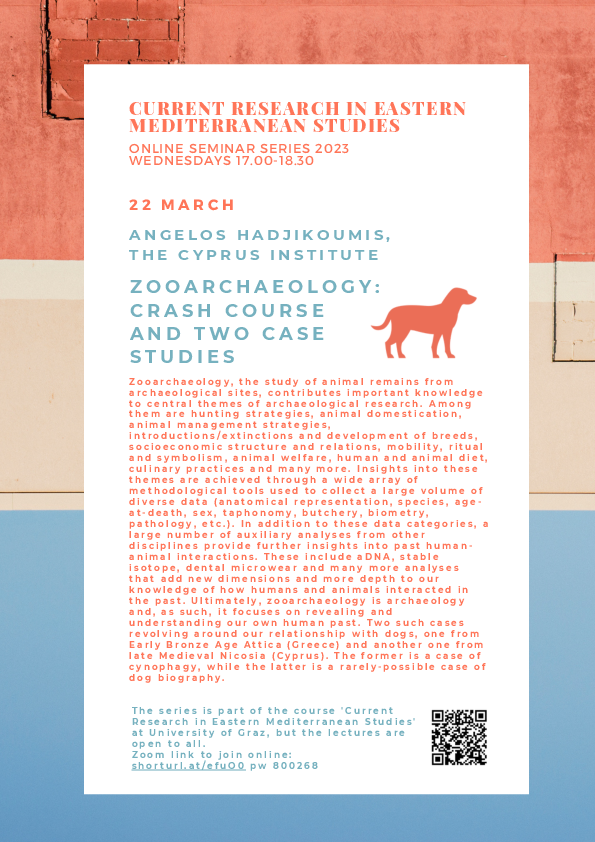Zooarchaeology, the study of animal remains from archaeological sites, contributes important knowledge to central themes of archaeological research. Among them are hunting strategies, animal domestication, animal management strategies, introductions/extinctions and development of breeds, socioeconomic structure and relations, mobility, ritual and symbolism, animal welfare, human and animal diet, culinary practices and many more. Insights into these themes are achieved through a wide array of methodological tools used to collect a large volume of diverse data (anatomical representation, species, age-at-death, sex, taphonomy, butchery, biometry, pathology, etc.). In addition to these data categories, a large number of auxiliary analyses from other disciplines provide further insights into past human-animal interactions. These include aDNA, stable isotope, dental microwear and many more analyses that add new dimensions and more depth to our knowledge of how humans and animals interacted in the past. Ultimately, zooarchaeology is archaeology and, as such, it focuses on revealing and understanding our own human past. Two such cases revolving around our relationship with dogs, one from Early Bronze Age Attica (Greece) and another one from late Medieval Nicosia (Cyprus). The former is a case of cynophagy, while the latter is a rarely-possible case of dog biography.
Beginn des Seitenbereichs:
Seiteneinstellungen:
Ende dieses Seitenbereichs. Zur Übersicht der Seitenbereiche
Beginn des Seitenbereichs:
Suche:
Schließen
Ende dieses Seitenbereichs. Zur Übersicht der Seitenbereiche
Suchen
Beginn des Seitenbereichs:
Hauptnavigation:
Seitennavigation:
- Universität
Universität
Lösungen für die Welt von morgen entwickeln – das ist unsere Mission. Unsere Studierenden und unsere Forscher:innen stellen sich den großen Herausforderungen der Gesellschaft und tragen das Wissen hinaus. - Forschungsprofil
Forschungsprofil
Wissenschaftliche Exzellenz und Mut, neue Wege zu gehen. Forschung an der Universität Graz schafft die Grundlagen dafür, die Zukunft lebenswert zu gestalten. - Studium
Studium
Wo ist der beste Ort zum Studieren? An der Uni Graz. In einer inspirierenden Atmosphäre des Lernen und Forschens. Mit rund 120 Studien zur Auswahl. Für deinen Weg in die Zukunft. - Community
Community
Die Universität Graz ist Drehscheibe für internationale Forschung, Vernetzung von Wissenschaft und Wirtschaft sowie für Austausch und Kooperation in den Bereichen Studium und Lehre. - Spotlight
Ende dieses Seitenbereichs. Zur Übersicht der Seitenbereiche
Beginn des Seitenbereichs:
Sie befinden sich hier:
Ende dieses Seitenbereichs. Zur Übersicht der Seitenbereiche
22.03.2023
17:00 - 18:30
Angelos Hadjikoumis, The Cyprus Institute
Beginn des Seitenbereichs:
Zusatzinformationen:
Ende dieses Seitenbereichs. Zur Übersicht der Seitenbereiche
Ende dieses Seitenbereichs. Zur Übersicht der Seitenbereiche
